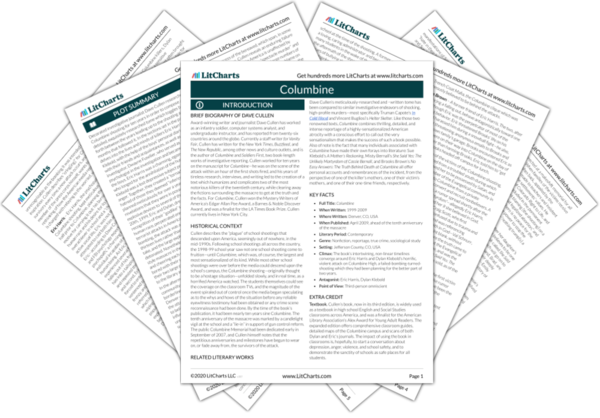Fuselier, experienced in his role as an analyst and negotiator, understands that while the killers’ crimes are unforgivable, there must have been a “reason” for them—at least in the eyes of the boys themselves. Fuselier’s endeavor to understand the shooters will shed some much-needed light on the case. His discovery of Eric’s deep, blanket hatred of the world and humanity opens a new chapter in the investigation, and will provide some much-needed answers for those still struggling to identify and understand the “whys” of the case.


